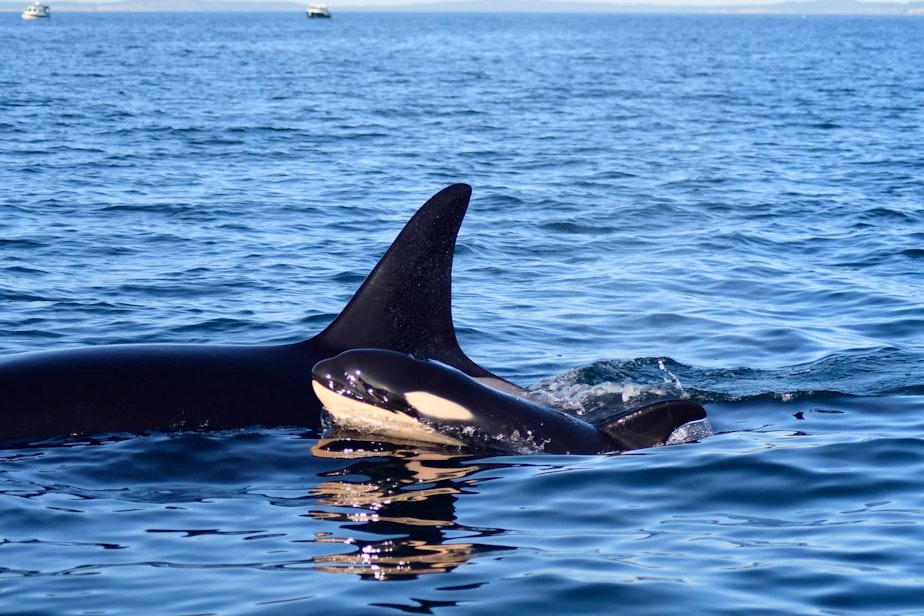'They're our relatives.' Samish Indian Nation prepares to welcome new orca calf to Puget Sound

Since the recent birth of a southern resident orca calf, Coast Salish tribes have begun preparing for the naming ceremony that will officially welcome their new relative to the community.
Tom Wooten, the chairman of the Samish Indian Nation, said the mortality rate is pretty high for baby whales, but if this baby makes it through the year, they’ll gather for what’s known as a potlatch to present the whale, which is currently called J60 by researchers, with a traditional Samish name.
“After the first year, we'll come together and we'll reach out to our elders and work on an appropriate name and invite folks and do a traditional naming, and introduce him or her to the community at large, our community, the community of Samish and then, of course, everyone else too.”
For now, they plan to gather blankets and other supplies for the potlatch celebration, where everyone in the Samish community and beyond is invited.
In Wooten’s community, orcas are just like people and deserve a name — a family name.
“We believe that they’re our relatives, and we're obliged to treat them as relatives, and one of the things we do for our relatives is carry on those family names,” he said.
Sponsored
The tribe's culture team and elders would choose a name that fits the whale, and carry on traditions marked by the name.
RELATED: Newborn orca spotted near Seattle off Bainbridge Island
According to the Whale Museum, orca and close relative to baby J60, Sxwyeqólh (sway-ah-kash, meaning “reason for hope child” in Samish and referred to as J59 by researchers), had her naming celebration last summer. Before that, the last naming celebration for a resident orca had taken place in 2013, when T’ilem I’nges (till-imm mean-gus, meaning “singing grandchild” in Samish and referred to as J49 by researchers) received his name.
Since the Samish Indian Nation was re-recognized in 1996, Wooten said they’ve been working to raise awareness, including through these naming ceremonies, around the southern resident killer whales, which have been designated as endangered under the federal Endangered Species Act since 2005.
The Orca Network reports 60 documented killer whale births in the Puget Sound area since the 1990s. In that time, more than a 100 have gone missing or have died.
RELATED: Endangered Orcas missing from their home waters for 10 weeks
Sponsored
During his first year of life, J60 will have to survive an ecosystem that humans have had a significantly negative impact on, and have a responsibility to address, Wooten said. He sees J60's birth as a good sign of momentum toward a thriving orca population: The whales are an apex predator and their health is an indicator of the health of their ecosystem.
“In terms of factors that limit their survival, sufficient salmon prey, vessel traffic and noise, and toxic pollutants that collect in their bodies are some of the primary threats,” said Michael Milstein, a spokesperson for the National Oceanic and Atmospheric Administration, which has monitored southern resident orcas since the 2000s. “In addition, inbreeding within the small population has also emerged as a factor.”
A new law signed last year, Senate Bill 5371, will require a 1,000 yard buffer between recreational boats and any whales when it takes effect in 2025. For commercial boats, there’s been a trial period of slowing ships down in hopes of making it easier for orcas to “see.”




